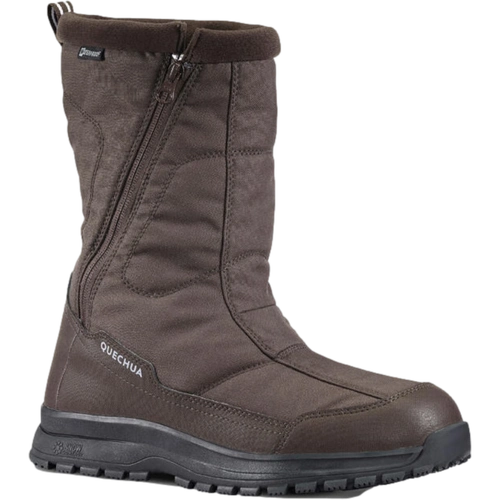
Kyrgyzstan’s growing economy, shaped by remittances, agriculture, and a youthful population, offers a unique opportunity for footwear importers. With increasing urbanization and rising consumer demand for affordable, durable footwear, businesses sourcing from China can tap into a market where practicality meets emerging style trends. This article explores Kyrgyz-specific strategies, challenges, and actionable steps to build a profitable footwear import business.
—
Why China is a Strategic Partner for Footwear Sourcing
China remains the world’s largest footwear producer, accounting for over 60% of global production, with capabilities tailored to Kyrgyzstan’s needs:
1. Cost Efficiency: Competitive pricing due to economies of scale and advanced manufacturing techniques, enabling prices 30–50% lower than European suppliers.
2. Diverse Product Range: From rugged boots for mountainous terrain to lightweight sandals for urban consumers, Chinese factories cater to Kyrgyzstan’s diverse climate and lifestyle.
3. Sustainability Innovations: Many manufacturers now use eco-friendly materials (e.g., recycled polyester, biodegradable soles) to align with global trends and Kyrgyzstan’s environmental policies.
For Kyrgyz importers, China provides a reliable source of high-quality footwear to meet local and regional demand.
—
Kyrgyzstan’s Footwear Market: Trends and Drivers
Kyrgyzstan’s footwear sector is valued at $80 million (2023), driven by:
– Urbanization: Over 35% of the population resides in cities like Bishkek and Osh, where trendy, affordable casual wear is in demand.
– Rural Needs: Agricultural workers prioritize durable, weather-resistant footwear for outdoor labor.
– Tourism Influence: Over 2 million tourists visit annually, many seeking comfortable shoes for hiking in Ala-Archa National Park and other natural sites.
– E-Commerce Growth: Platforms like *Kazan.kg* and *Wildberries Kyrgyzstan* are expanding online sales, accounting for 8% of retail revenue.
– Climate-Driven Demand: Insulated, waterproof footwear is popular during harsh winters, while breathable options dominate summer months.
Importing Chinese footwear allows businesses to balance affordability with versatility in this underpenetrated market.
—
Step-by-Step Guide to Importing Footwear to Kyrgyzstan
1. Market Research and Supplier Selection
– Identify Niches: Focus on high-demand categories like insulated boots (for winter), lightweight sandals (for summer), or work boots (for rural labor).
– Source Suppliers: Use Alibaba or Global Sources to connect with verified factories. Prioritize suppliers with experience in Central Asia and certifications like ISO 9001. Request samples to test durability and design suitability.
2. Compliance and Documentation
– Regulatory Requirements: Ensure products meet Kyrgyzstan’s standards, including bilingual labeling (Russian/Kyrgyz), safety certifications (e.g., GOST R), and halal compliance if targeting conservative demographics.
– Customs Procedures: Prepare invoices, packing lists, and certificates of origin. Kyrgyzstan imposes a 5–15% import duty on footwear, varying by material (e.g., leather vs. synthetic).
3. Logistics and Shipping
– Shipping Routes: Opt for sea freight via Almaty Port (Kazakhstan) or air freight via Bishkek’s Manas International Airport. Sea routes take 30–45 days, while air freight reduces transit to 7–10 days but increases costs.
– Freight Partners: Partner with logistics providers experienced in Central Asia to navigate customs delays and roadblocks in mountainous regions.
4. Market Entry Strategies
– Target Rural Markets: Collaborate with agricultural cooperatives to distribute sturdy work boots.
– Urban Retail Networks: Partner with distributors in Bishkek’s Salih Mukanov Street or distribute via hypermarkets like *Nur-Sultan Market*.
—
Challenges and Solutions
1. Infrastructure Limitations
– Road Transport Delays: Partner with freight forwarders to expedite customs clearance and avoid logistical bottlenecks.
– Power Outages: Plan production timelines to avoid disruptions during quality inspections.
2. Cultural Preferences
– Design Adaptations: Avoid open-toe styles for women in conservative rural areas. Incorporate durable materials for outdoor use and vibrant colors for urban markets.
3. High Import Duties
– Mitigation: Leverage Kyrgyzstan’s free trade agreements with EAEU members (e.g., Kazakhstan, Russia) to reduce tariffs on select products. Negotiate DDP (Delivered Duty Paid) terms with suppliers.
4. Price Sensitivity
– Bundle Deals: Offer discounts on bulk purchases or include accessories (e.g., waterproof socks) to add value.
—
Future Outlook: Kyrgyzstan-China Trade Synergies
Kyrgyzstan’s participation in China’s Belt and Road Initiative (BRI) promises improved connectivity through the China-Kyrgyzstan-Uzbekistan Railway, which aims to reduce shipping costs and transit times. Key opportunities include:
– Regional Export Hub: Use Kyrgyzstan as a base to access Kazakhstan and Uzbekistan via preferential trade agreements.
– E-Commerce Expansion: Tap into Kyrgyzstan’s rising online shopping trends with localized campaigns on platforms like *Kazan.kg*.
– Sustainability Collaborations: Align with China’s green manufacturing initiatives to qualify for carbon-neutral certifications, appealing to eco-conscious urban buyers.
—
Final Thoughts
Importing footwear from China to Kyrgyzstan requires a strategic blend of cost efficiency, cultural adaptability, and regulatory compliance. By prioritizing durable designs, compliant standards, and partnerships with local distributors, businesses can capitalize on Kyrgyzstan’s growing demand. As the country advances toward economic diversification under its *National Development Strategy 2040*, early movers who combine China’s manufacturing agility with localized insights will thrive in this resilient market.
Article link:https://www.vlefooena.com/manufacturer/3789/

No reply content